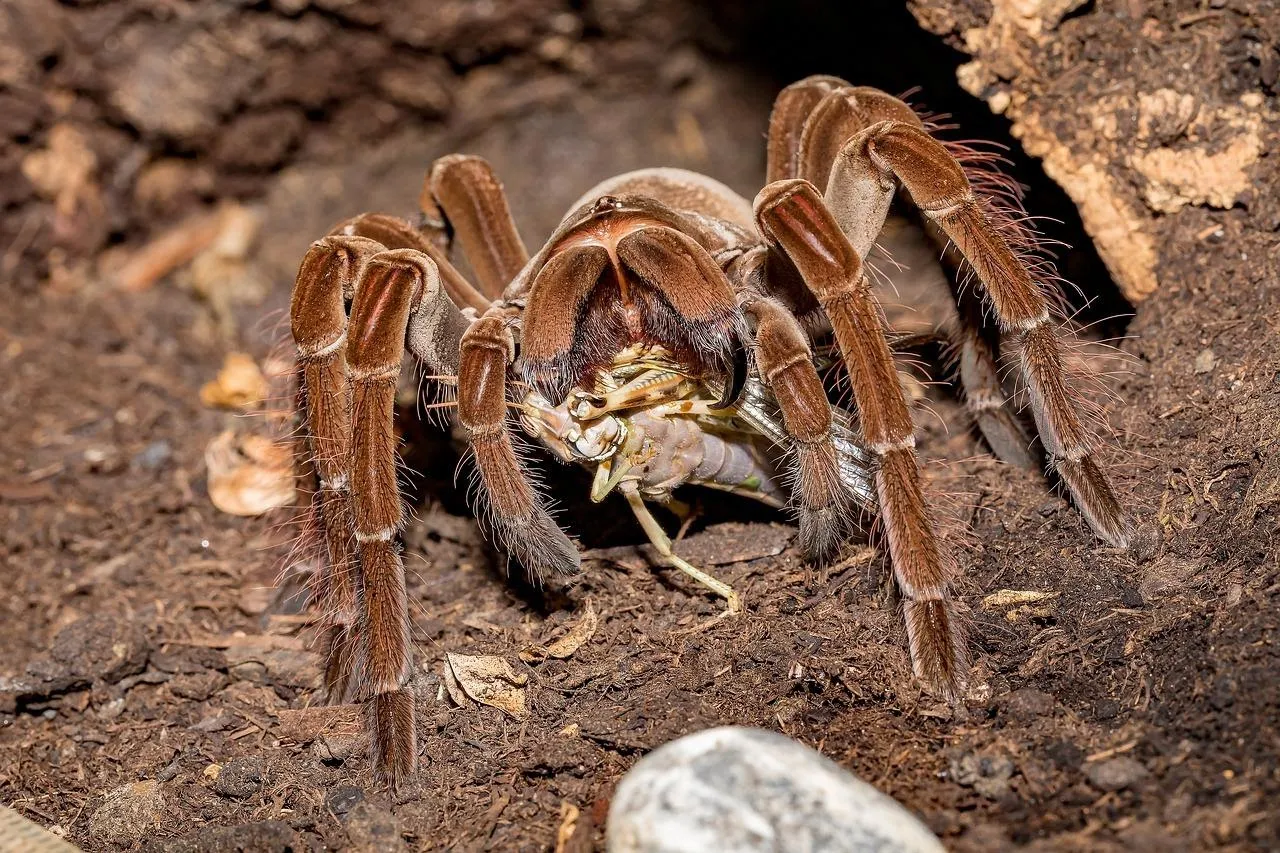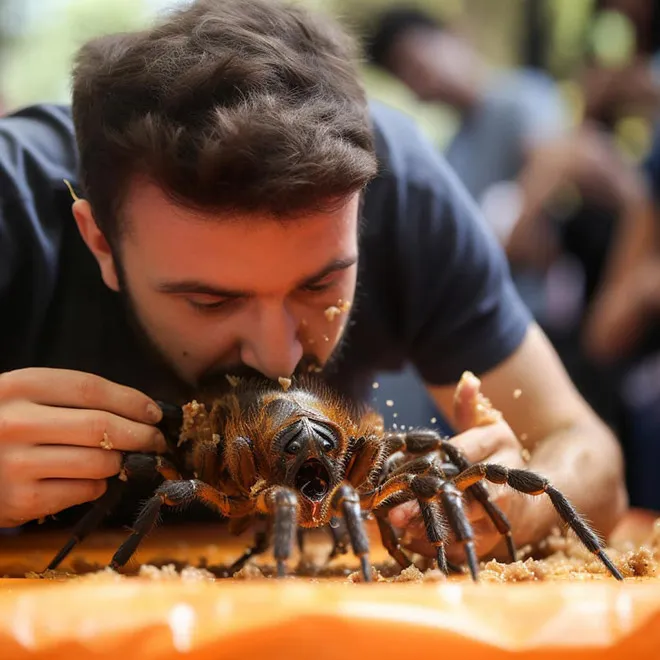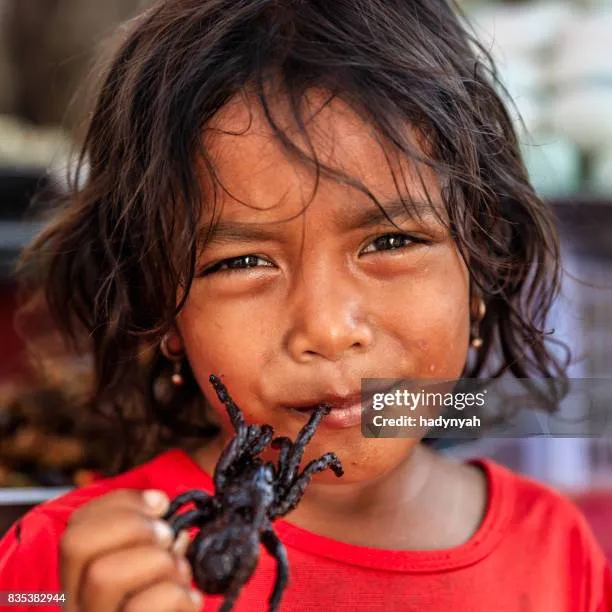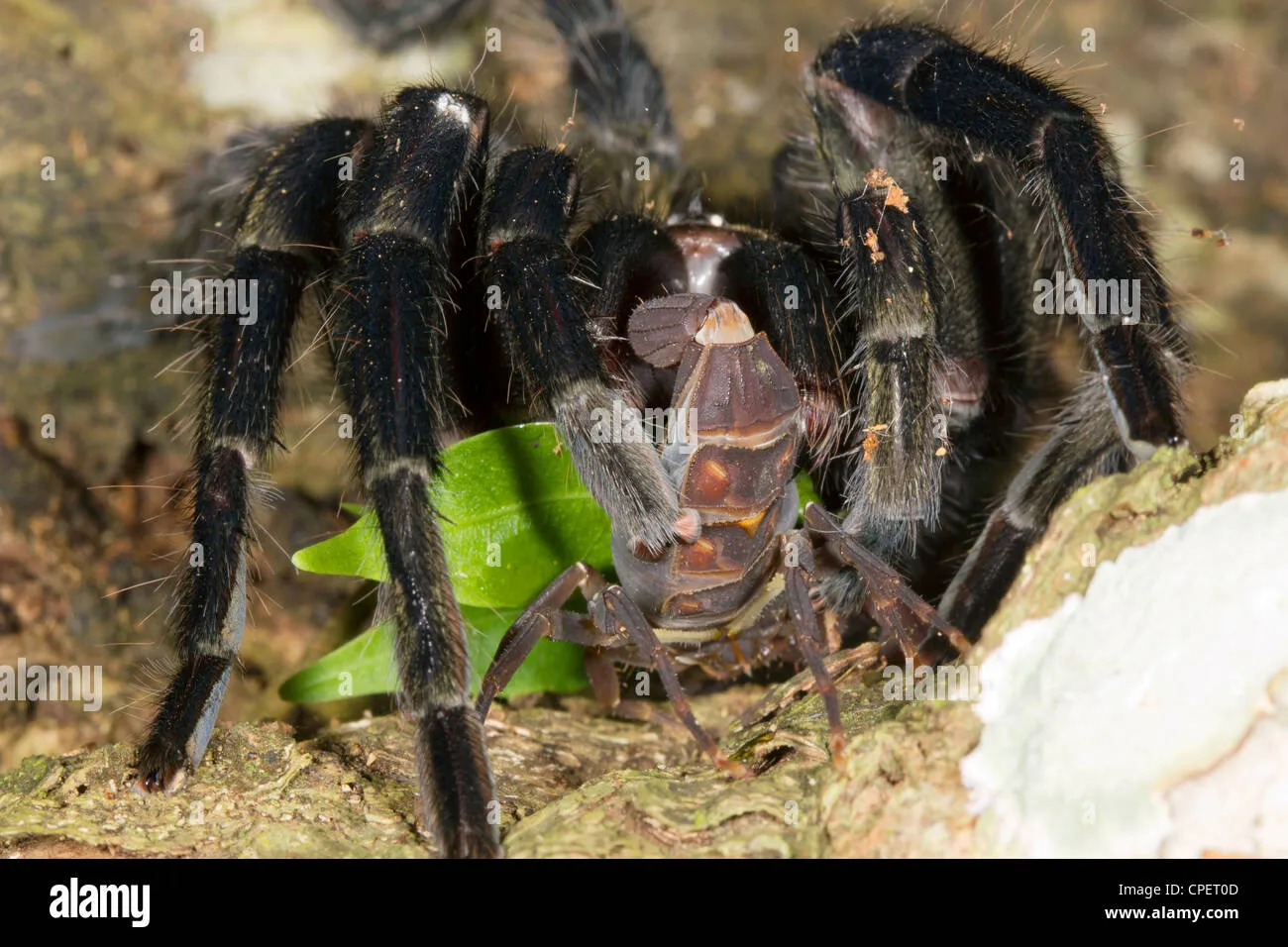The Horrifying Reality of a Kid Eating Tarantula
The idea of a kid eating a tarantula is not only unusual but also deeply unsettling. It’s a scenario that immediately sparks concerns about health, safety, and psychological well-being. While it may seem like a rare occurrence, understanding the potential dangers and underlying reasons behind such an act is crucial. This article delves into the terrifying facts associated with a kid eating a tarantula, exploring the risks involved and providing essential information for parents and caregivers.
What Drives a Kid to Eat a Tarantula
Understanding the motivation behind a child’s actions is the first step in addressing this disturbing scenario. Several factors could contribute, ranging from cultural influences to psychological curiosities. It is crucial to consider all possibilities to prevent this issue.
Cultural Factors and Curiosity

In some cultures, insects and arachnids are part of the diet. However, even in such contexts, a whole tarantula is unlikely to be a common food for young children. Curiosity, a strong driving force in children, might lead them to explore the world around them by putting things in their mouths. Without proper education and parental guidance, this curiosity can lead to dangerous situations.
Psychological Influences
Psychological factors, like a desire for attention or mimicking others, could play a role. Children might act out of defiance or to test boundaries. Furthermore, a child’s developmental stage, particularly if they have a limited understanding of danger, could make them more likely to engage in risky behaviors. It’s essential to address any underlying emotional or psychological issues.
The 5 Most Terrifying Facts
The potential consequences of a kid eating a tarantula are frightening. Here are five of the most terrifying facts that parents and caregivers should be aware of to ensure children’s safety and health.
Fact 1 Risk of Allergic Reaction

Tarantulas, like other arthropods, can trigger allergic reactions in humans. These reactions range from mild to severe and can pose significant health risks to children. If a kid eats a tarantula, there’s a high probability of an allergic reaction. This is one of the most immediate and dangerous risks.
Symptoms of Allergic Reaction
Symptoms can include skin rashes, hives, itching, swelling of the face, lips, and tongue, difficulty breathing, wheezing, and gastrointestinal issues such as nausea, vomiting, and diarrhea. Immediate medical attention is crucial if a child displays these symptoms.
Severity of Allergic Reaction
The severity of an allergic reaction can vary greatly. Anaphylaxis, a severe and potentially life-threatening allergic reaction, can cause a sudden drop in blood pressure, loss of consciousness, and respiratory failure. Prompt treatment with epinephrine (an EpiPen) and emergency medical care are essential in such cases.
Fact 2 Potential for Parasites

Tarantulas, like many other animals, can harbor parasites that could be transmitted to a child if ingested. Parasites can cause a variety of health problems, ranging from mild discomfort to severe illness. Parasites pose a long-term health risk, unlike some of the more immediate effects of eating a tarantula.
Common Parasites in Tarantulas
Common parasites found in tarantulas include various types of worms and protozoa. These parasites can infect a child’s digestive system, causing symptoms such as abdominal pain, diarrhea, and weight loss. Proper hygiene practices and thorough cooking of food are crucial to prevent parasitic infections.
Health Risks of Parasites
Parasitic infections can lead to chronic health problems. Some parasites can damage internal organs, while others can weaken the immune system. Regular medical check-ups and prompt treatment are essential if a parasitic infection is suspected. Long-term effects can include malnutrition and developmental issues in children.
Fact 3 Toxicity Concerns

Tarantulas, like many other spiders, produce venom. Although not typically lethal to humans, the venom can cause localized pain, swelling, and other unpleasant symptoms. In addition to venom, tarantulas may carry other toxic substances on their bodies, such as irritant hairs. The act of eating a tarantula presents a direct risk of exposure to these toxins.
Tarantula Venom and Its Effects
Tarantula venom is designed to immobilize prey. While a human bite is rarely fatal, it can cause significant discomfort. Symptoms may include intense pain, muscle cramps, and localized swelling. Young children, due to their smaller size and less developed immune systems, may be more susceptible to the effects of the venom.
Other Toxic Substances
Tarantulas have urticating hairs, which can cause irritation. These hairs are easily dislodged and can cause skin and eye irritation. Ingestion of these hairs can lead to further discomfort and potential allergic reactions. The exoskeleton of the tarantula also presents potential toxic risks.
Fact 4 Choking Hazards

Tarantulas, due to their size and texture, can pose a significant choking hazard to young children. The hard exoskeleton and multiple legs and body segments could obstruct a child’s airway, leading to a life-threatening situation. Choking is a real and immediate danger if a child eats a tarantula.
Size and Texture of Tarantulas
Tarantulas can be quite large, and their hard exoskeletons and numerous appendages make them difficult to chew and swallow. This increases the risk of the tarantula getting lodged in a child’s throat, blocking the airway and causing choking. The texture of the tarantula adds to the choking risk.
First Aid for Choking
Knowing how to respond to a choking incident is crucial. The Heimlich maneuver and CPR (cardiopulmonary resuscitation) are vital first-aid techniques that can save a child’s life. Parents and caregivers should be trained in these techniques and know how to act quickly in an emergency.
Fact 5 Psychological Trauma

The act of eating a tarantula, or even the experience of being exposed to the situation, can be deeply traumatizing for a child. The event can lead to lasting psychological effects, including phobias, anxiety, and other mental health issues. Addressing these psychological impacts is crucial for the child’s long-term well-being.
Long Term Mental Health Effects
Children may develop a fear of spiders, insects, or other related stimuli. This fear could escalate into a phobia that can interfere with daily life. Furthermore, the event could trigger anxiety disorders, post-traumatic stress disorder (PTSD), or other mental health conditions. Careful attention and psychological support are necessary to mitigate the effects.
Seeking Professional Help
If a child has experienced such a traumatic event, seeking professional psychological help is essential. Therapists can provide support and guidance to help the child process the experience and develop coping mechanisms. Early intervention can prevent long-term mental health problems.
Preventing a Kid Eating a Tarantula
Preventing a child from eating a tarantula involves a combination of education, supervision, and environmental safety measures. It’s about creating a safe environment and teaching children about potential dangers.
Educating Children About Risks
Educating children about the dangers of eating unknown or unsafe items is vital. Teach them about poisonous substances, the risks of putting things in their mouths without permission, and the importance of asking a trusted adult before trying something new. Age-appropriate explanations and ongoing conversations are critical.
Supervision and Safety Measures
Constant supervision, particularly in environments where tarantulas could be present, is essential. Keep tarantulas safely stored, and ensure children cannot access them. Create a safe environment where children can explore and learn without encountering dangerous situations. Implementing these safety measures significantly reduces the likelihood of such an incident.
Importance of Seeking Medical Assistance
If a child does eat a tarantula, immediate medical attention is crucial. Contact poison control, seek emergency medical care, and provide as much information as possible. This is critical for proper diagnosis and treatment, minimizing any potential harm. The health and safety of the child should be the top priority.
